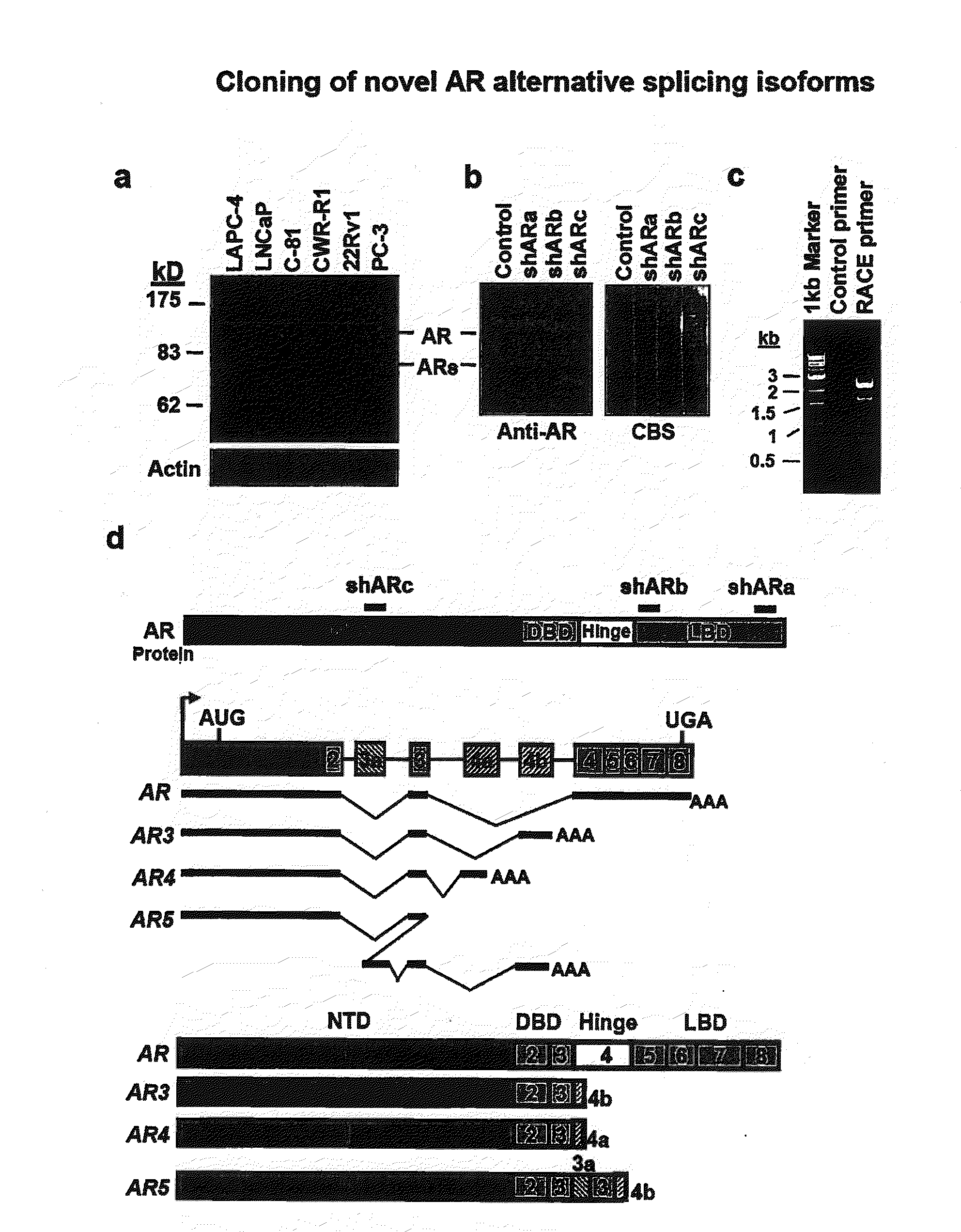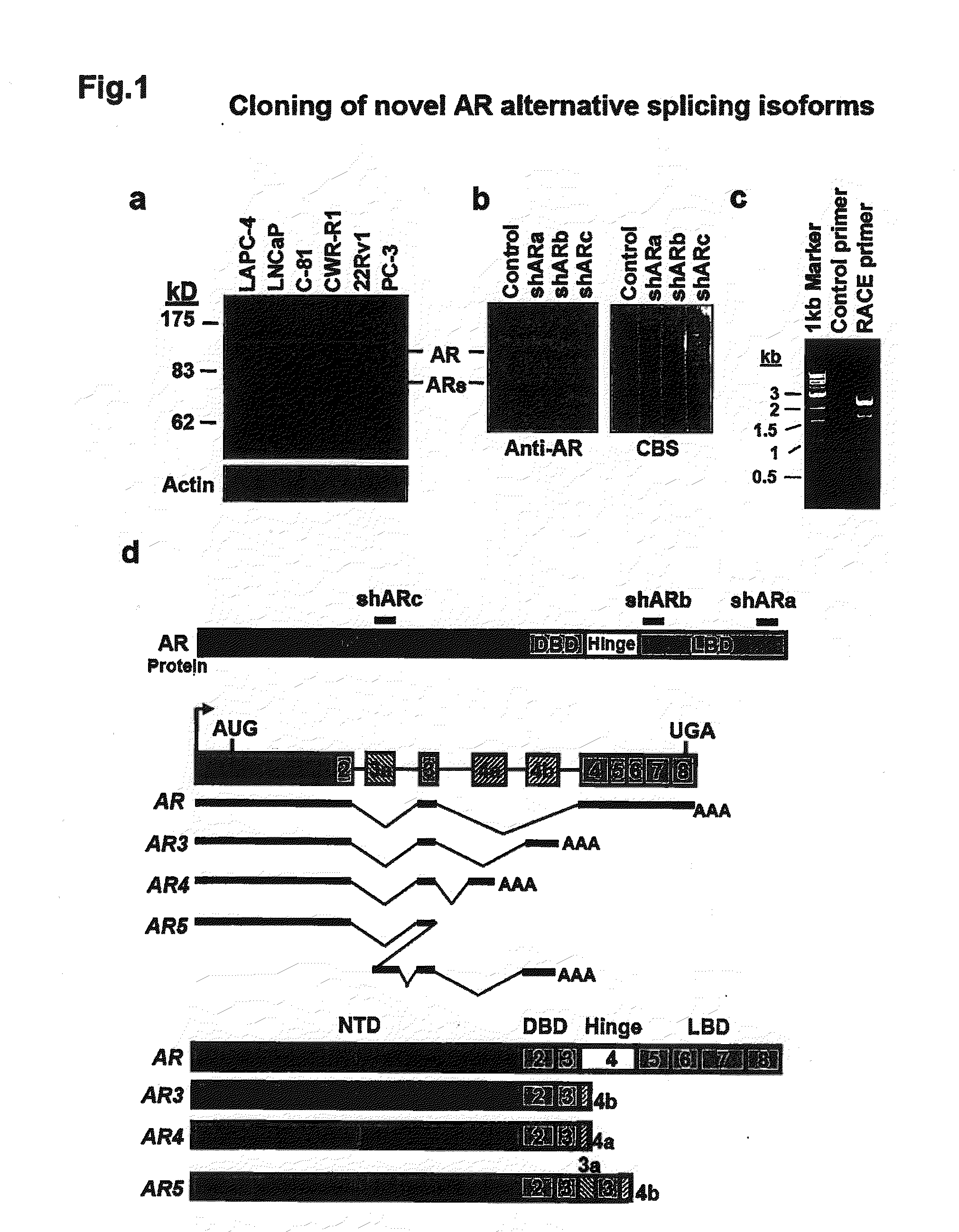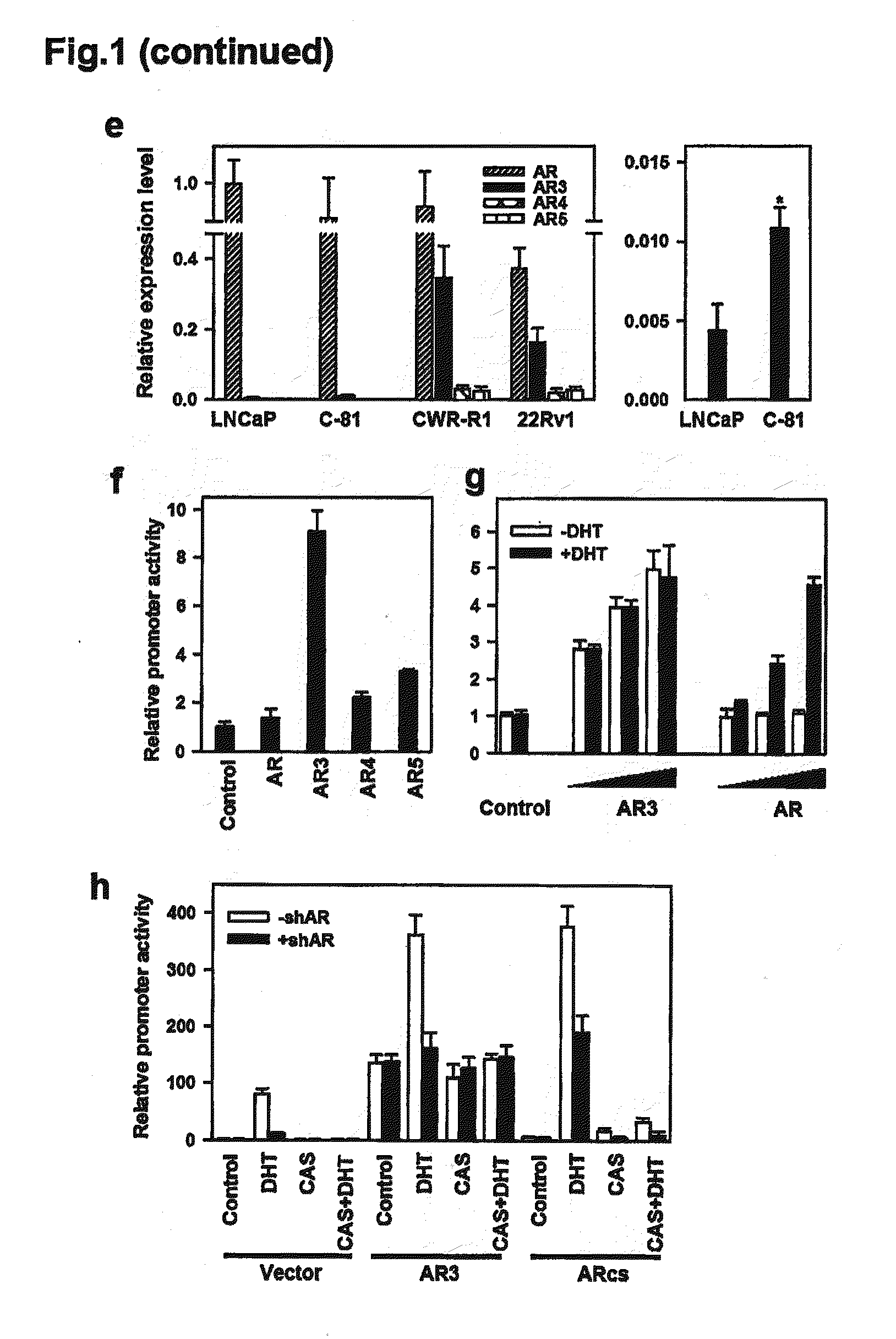Novel human androgen receptor alternative splice variants as biomarkers and therapeutic targets
a human androgen receptor and alternative splice technology, applied in the field of cell biology, molecular biology and medicine, can solve the problems of inability to detect androgen independent tumors, and inability to recur, and achieve the effect of increasing or decreasing the stability of mrna
- Summary
- Abstract
- Description
- Claims
- Application Information
AI Technical Summary
Benefits of technology
Problems solved by technology
Method used
Image
Examples
example 1
Identification of Novel Androgen-Independent AR Alternative Splicing Isoforms
[0214]We examined the expression of AR protein in a panel of PCA cell lines using an antibody recognizing the N-terminus of AR. In addition to the well characterized 110 kD AR protein, we detected one band approximately 80 kD in the LNCaP derivative C-81, CWR-R1 and 22Rv1 cells which are known to grow in the androgen-depleted medium (FIG. 1a). This short form of AR (ARs) appeared to correspond to the truncated AR previously reported in CWR-R1 and 22Rv1 cells. On the other hand, the 80 kD ARs was barely detectable in the androgen-dependent LAPC4 and LNCaP cells. These data implied an inverse correlation between the ARs and androgen-dependency of these cell lines in cell culture. To confirm that the 80 kD ARs was indeed derived from the AR gene, we treated CWR-R1 with a panel of shRNAs specifically targeting distinct regions of the AR gene. These shRNAs could differentially knock down AR and ARs, suggesting t...
example 2
Cell Culture and Transfection
[0217]LNCaP, PC-3, 22Rv1 and COS-i cells were purchased from the American Type Culture Collection. Hormone refractory prostate cancer cell lines C-S1, C4-2, C4-2B and CWR-R1 were kindly provided by Drs. Ming Fong Lin (Igawa, T. et al., Prostate 50, 222-35 (2002)), Donald Tindall, Christopher Gregory and Elizabeth Wilson (Gregory, C. W. et al., Cancer Res 61, 2892-8 (2001))., respectively. LNCaP, PC-3, C-81, C4-2 and C4-2B cells were maintained in RPMI 1640 with 10% FBS. COS-1 cells were grown in DMEM medium with 10% FBS. 22Rv1 and CWR-R1 cells were maintained in RPMI 1640 with 10% heat-inactivated FBS. LAPC-4 cells (kindly provided by Dr. Charles Swayers) were maintained in IMEM supplemented with 15% FBS and 10 nM DHT. The immortalized human normal prostate epithelial cell line HPr-1 described previously (Choo, C. K. et al., Prostate 40, 150-8 (1999) was kindly provided by Dr. Patrick Ling and maintained in the SEM keratinocyte medium.
[0218]The cells wer...
example 3
Antibodies
[0219]The antibodies used in immunoblot, immunoprecipitation, and immunofluorescence are mouse monoclonal antiAkt1 (2H10) (Cell Signaling), mouse monoclonal anti-AR (441), anti-actin (C2) and rabbit polyclonal anti-AR (H-280) and anti-AR (C-19) (Santa Cruz). The anti-AR3 antibody was developed by immunizing the rabbits with a synthetic peptide corresponding to the C-terminal 16 unique amino acids of AR3 and the terminal bleeds were affinity purified by a commercial carrier.
PUM
| Property | Measurement | Unit |
|---|---|---|
| diameter | aaaaa | aaaaa |
| thickness | aaaaa | aaaaa |
| particle size | aaaaa | aaaaa |
Abstract
Description
Claims
Application Information
 Login to View More
Login to View More - R&D
- Intellectual Property
- Life Sciences
- Materials
- Tech Scout
- Unparalleled Data Quality
- Higher Quality Content
- 60% Fewer Hallucinations
Browse by: Latest US Patents, China's latest patents, Technical Efficacy Thesaurus, Application Domain, Technology Topic, Popular Technical Reports.
© 2025 PatSnap. All rights reserved.Legal|Privacy policy|Modern Slavery Act Transparency Statement|Sitemap|About US| Contact US: help@patsnap.com



